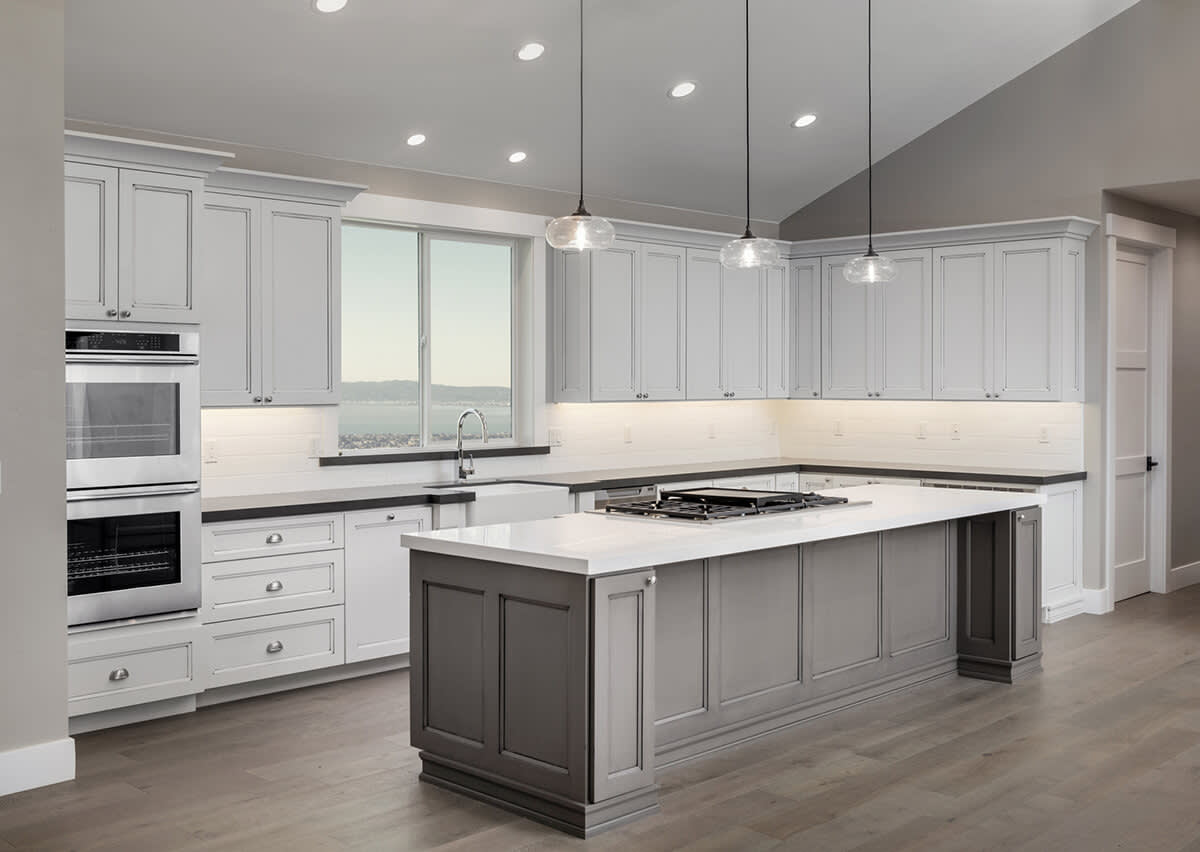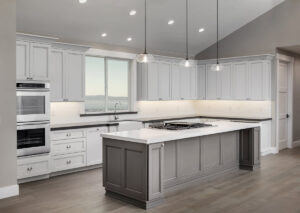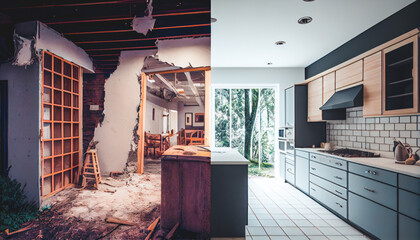How to Layout a Kitchen Remodeling Project

Kitchen Remodeling in Richmond VA can increase your home’s value and make it more functional. A major renovation can include changing the room’s footprint, rewiring the electricity, and rerouting the plumbing lines.
Minor updates can make a big impact, too. Add a pop of color, switch out hardware, or upgrade to durable luxury plank vinyl floors.

When remodeling a kitchen, layout is one of the most important elements to consider. Whether upgrading appliances, cabinets, counters, or more, making a plan will help ensure that your remodel goes smoothly and stays on budget.
Taking the time to evaluate and carefully plan your new kitchen design will save you both money and frustration in the long run. Evaluate what you have now and decide what needs to be improved and what will stay the same, including how the kitchen is used.
If you’re not satisfied with your current kitchen layout, consider a remodel that changes the work flow and creates more efficient work spaces. For example, if you don’t currently have a working triangle (a path between the stovetop, sink and refrigerator), this is an easy modification that can make a big difference in your overall cooking efficiency.
Kitchen designs can vary, but most are designed to suit your specific needs and workflow. For example, if you cook with a large group or frequently entertain guests, an L-shaped kitchen with a peninsula may be the best option for your space. This provides plenty of storage and countertop space, as well as an eat-at bar area.
A U-shaped kitchen is another popular option for larger spaces. This layout wraps around three walls, which offers more cabinet and counter space than an L-shaped kitchen. However, it can feel cramped in tighter spaces. To remedy this, try adding a central island to the layout. This shortens the distance between the refrigerator, stove and sink, which can help make a large kitchen feel more comfortable and efficient. You can even add a bar-height counter to the island to transform it into an eat-in kitchen.
Whether you’re ready to splurge or remodel on a budget, the appliances you choose can greatly influence your kitchen design and function. The best place to start is by setting aside a portion of your budget for the purchase and installation of new appliances. Then, research different appliance brands and differentiating features to find the right appliances for your home.
In addition to their primary functions, modern kitchen appliances often add convenience and aesthetics to your home. They also offer features that improve efficiency and safety. For example, some refrigerators and dishwashers feature sensors that prevent food from spoiling or overheating. Some ovens and dishwashers are even able to run in a self-cleaning mode that eliminates the need for manual cleaning.
Choosing the right appliances for your kitchen remodel also involves considering aesthetics and how they fit in your kitchen design. You should consider how your new appliances will match the rest of your décor, as well as any structural changes that will be necessary to accommodate them. For example, you may need to change the plumbing or electrical wiring to support a new appliance. Lastly, you should choose between freestanding or built-in appliances and consider features like lighting, warming lamps and utensil racks.
When deciding on your kitchen remodel appliances, make sure you talk to a local repair man. You don’t want to splurge on the perfect appliance only to find out it doesn’t get repaired locally or is hard to find replacement parts for. Fortunately, many appliance manufacturers offer extended warranties that protect you in this scenario. Additionally, higher-end appliances will generally include cosmetic warranty coverage to keep your appliances looking good.
Countertops are one of the most visible elements in a kitchen. Claiming horizontal real estate atop lower cabinets and across islands and peninsulas, countertops handle a heavy assignment load—from food prep to supporting stools, appliances and serving dishes. They’re also expected to make a style statement that complements cabinetry and surrounding decor. Selecting the right countertop material requires weighing factors such as appearance, durability, and price per square foot.
Solid-surface materials like Corian and Formica offer durable alternatives to natural stones and woods. These manufactured products can be molded to seamlessly fit and come in a wide range of colors, patterns and textures. They’re stain- and heat-resistant but do require periodic upkeep to remove scratches, etching and other damage.
Quartz countertops are popular for their durability and beauty. They come in a variety of colors and styles and feature natural veining to mimic the look of marble. Granite is another common choice, and its dramatic veining adds visual interest to a kitchen. It’s available in a variety of shades, and its strength makes it a great counter surface for cutting foods and other uses.
Porcelain tile is another kitchen countertop option that’s gaining popularity thanks to its nonporous design. This keeps it hygienic and safe for cutting, cooking and cleaning. It’s also available in large sizes that reduce the number of seams.
For a more modern and industrial feel, consider metal countertops. These are fabricated from copper, stainless steel, or another durable metal and are available in a wide range of finishes, from shiny copper to distressed black. Stainless steel is highly scratch-resistant but will develop a greenish cast over time and can be easily dented.
Cabinets and cupboards are the functional backbone of a kitchen. They store dishes, cookware, and other kitchen items while providing a style statement and a focal point for the room. Cabinets can be built into walls, or they can stand free and be positioned anywhere in the space where additional storage is needed. The cabinets can be made of wood, metal or plastic and can feature shelves and drawers.
The most obvious cabinets are the wall cabinets – also called uppers – that mount to the wall. These offer more design flexibility than base cabinets and come in three different heights, multiple widths and custom depth options. They can even be stacked to the ceiling, making use of high spaces that are typically used for storing infrequently-used specialty dishware and serving pieces.
Besides determining the cabinet layout, this phase of the remodel also helps establish what Klein calls the project scope: “Is it a cosmetic refresh with new doors and hardware or a full gut, including moving plumbing and electrical?”
A contractor can assist with planning for these upgrades, which may involve removing existing pipes, running new wires, and relocating existing appliances to accommodate a larger refrigerator, for example. It is important to consult a licensed professional for work that requires a permit.
The cabinet body – the structural component of a cabinet that holds shelves, drawers and door fronts – is usually crafted from plywood or higher-quality particle board. Plywood is stronger and less susceptible to warping than standard wood panels. It is available in a wide range of thicknesses, which influences the price. For a budget-friendly option, melamine cabinetry is manufactured from layers of medium to softwoods glued together with a layer of paper coloured with heat-fused melamine resin. It comes in a wide range of colours and styles, including a convincing faux-wood grain finish.
The kitchen floor is exposed to a lot of wear and tear, so replacing it during a remodel can dramatically improve the look of your home. Laminate is a popular choice for its low price and ease of installation, while hardwood offers beauty and durability. Installing either of these options is a complex project, however, and not recommended for DIYers.
If you decide to use a general contractor for your remodel, they can manage the subcontractors and obtain the required permits. They can also offer design services for customers who want to transform their kitchens with specific features. For example, a contractor can help you plan the layout of a U-shaped kitchen, one-wall design, or L-shaped kitchen, as well as create a blueprint for a new kitchen island or add a window.
A kitchen remodel increases your enjoyment of the space and can increase your property value. Aside from the obvious aesthetic benefits, it can also instill a sense of pride in homeownership. This is a sign that you are invested in the property and are working to make it the best it can be.
In addition to the resale benefits, a kitchen remodel that incorporates eco-friendly upgrades can save you money in the long run and reduce your carbon footprint. You can do this by using resourceful solutions, such as LED lighting and energy-efficient appliances. Additionally, you can opt for low-flow plumbing fixtures like toilets and faucets that minimize water waste. These upgrades can increase your resale potential, as many buyers are interested in purchasing homes that have been updated to be environmentally responsible. Besides, eco-friendly solutions will reduce your utility bills and lower your recurring expenses.

